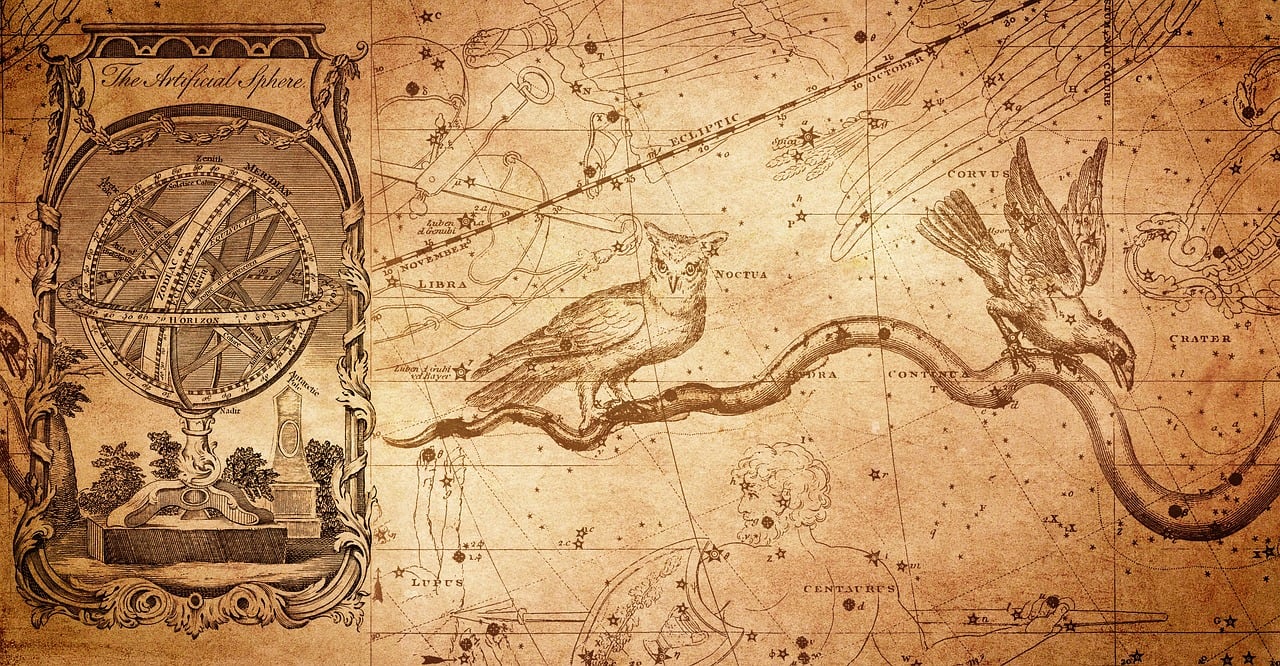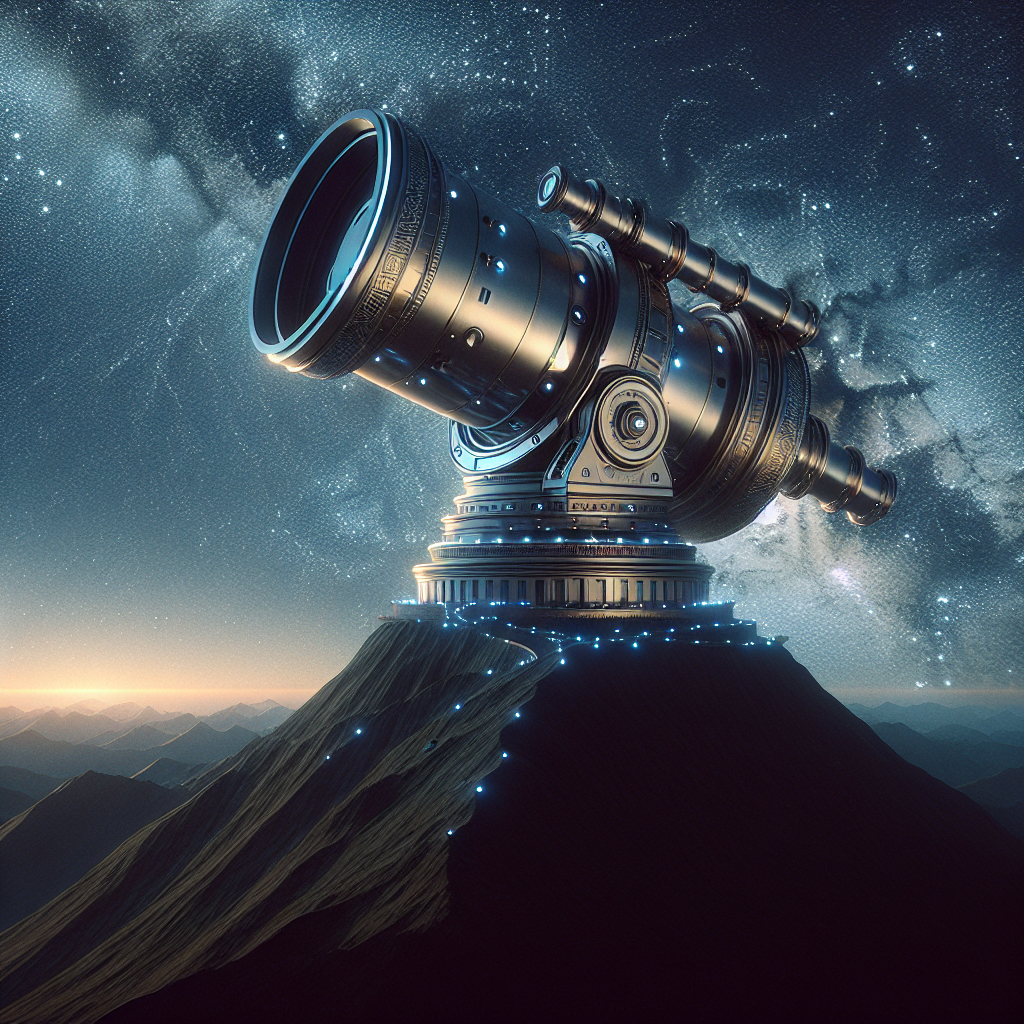If you find yourself wondering whether you can upgrade your telescope for improved observations, then you’re in the right place! Exploring the wonders of the night sky is a thrilling adventure, and it’s only natural to want to enhance your telescope’s capabilities. In this article, we’ll delve into the world of telescope upgrades and guide you through the various options available to take your stargazing experiences to new heights. So, brace yourself for a journey of discovery as we uncover the possibilities of upgrading your trusty telescope.

Table of Contents
Types of Telescopes
When it comes to telescopes, there are several different types to choose from, each with its own unique features and benefits. The three main types of telescopes are reflecting telescopes, refracting telescopes, and catadioptric telescopes.
Reflecting Telescopes
Reflecting telescopes use a combination of curved mirrors to gather and focus light. The primary mirror at the bottom of the telescope collects incoming light and reflects it to a secondary mirror, which then directs the light through the eyepiece for viewing. Reflecting telescopes are known for their ability to gather a large amount of light, making them ideal for observing faint objects in the night sky.
Refracting Telescopes
Refracting telescopes, on the other hand, use lenses to collect and focus light. The objective lens at the front of the telescope gathers the light and directs it to the eyepiece for viewing. Refracting telescopes are known for their crisp, clear images and are often used for observing planets and other objects in our solar system.
Catadioptric Telescopes
Catadioptric telescopes combine elements of both reflecting and refracting telescopes. They use a combination of mirrors and lenses to gather and focus light. This type of telescope is known for its compact size and versatility. Catadioptric telescopes are popular among amateur astronomers due to their portability and ability to gather a decent amount of light.
Understanding Telescope Components
To better understand how to upgrade your telescope, it’s essential to familiarize yourself with its key components. Understanding the role of each component will help you identify areas for improvement and make informed decisions.
Objective Lens/Mirror
The objective lens or mirror is the primary component responsible for gathering the light and forming the image. It determines the telescope’s light-gathering power and influences its overall performance. Upgrading the objective lens or mirror can significantly enhance the quality of your observations.
Eyepiece
The eyepiece is the component through which you look to see the magnified image. It determines the telescope’s magnification power and influences the field of view. Different eyepieces can provide varying levels of detail and clarity, making them another potential area for improvement.
Focuser
The focuser is the mechanism that allows you to adjust the position of the eyepiece to achieve a sharp focus. Upgrading the focuser can contribute to smoother and more precise focusing, enhancing your viewing experience.
Mount
The mount is the base of the telescope and is responsible for holding and stabilizing the telescope. It determines how easily you can move and track celestial objects. Upgrading to a more advanced mount can provide better stability and tracking capabilities.
Finder Scope
The finder scope is a smaller telescope mounted on the main telescope and is used to locate and center objects before viewing them through the main telescope. Upgrading the finder scope can make it easier to locate and track objects, especially for beginners.
Important Considerations Before Upgrading
Before diving into the world of telescope upgrades, there are a few important factors to consider. Understanding your current telescope’s limitations, determining your desired observations, and considering your budget constraints will help you make informed choices.
Identifying Limitations of Current Telescope
Take some time to evaluate your current telescope and identify any limitations you may have encountered. Consider factors such as light-gathering power, image quality, and ease of use. Understanding what aspects you find lacking will guide you in choosing the right upgrades.
Determining Desired Observations
Think about the type of celestial objects you are most interested in observing. Are you primarily interested in observing planets, deep-sky objects, or both? Different upgrades will cater to different types of observations, so it’s essential to align your upgrade choices with your interests.
Budget Constraints
Consider your budget when selecting telescope upgrades. While it’s exciting to have the latest and most advanced equipment, it’s important to choose upgrades that fit within your budget. There are various options available at different price points, so prioritize upgrades that will have the most significant impact on your observations.
Upgrading the Objective
The objective lens or mirror plays a crucial role in the overall performance of a telescope. Upgrading this component can significantly enhance your viewing experience.
Replacing Objective Lens/Mirror
If you are unsatisfied with the image quality or light-gathering power of your current telescope, consider upgrading the objective lens or mirror. Opting for a higher-quality lens or mirror can result in clearer, more detailed images and allow you to observe fainter objects in the night sky.
Considering Aperture Size
Aperture size refers to the diameter of the objective lens or mirror. A larger aperture allows more light to enter the telescope, resulting in brighter and more detailed images. Upgrading to a telescope with a larger aperture can significantly improve your observations, especially when it comes to observing faint deep-sky objects.
Upgrading to Higher Quality Optics
In addition to upgrading the size of the objective lens or mirror, consider upgrading to higher quality optics. Look for lenses or mirrors made from high-quality materials and designed with precision. Upgrading to better optics can result in sharper images and improved overall performance.

Upgrading the Eyepiece
The eyepiece is another crucial component to consider when upgrading your telescope. It determines the magnification power and field of view, both of which can greatly impact your observing experience.
Understanding Eyepiece Specifications
Eyepieces are labeled with specifications such as focal length and apparent field of view (AFOV). Understanding these specifications will help you choose the right eyepieces for your desired observations. Smaller focal lengths provide higher magnification, while larger AFOVs offer a wider field of view.
Choosing Eyepieces with Different Focal Lengths
Investing in eyepieces with different focal lengths can provide versatility in your observations. Shorter focal length eyepieces will give you higher magnification, allowing for detailed views of planets and moon craters. Longer focal length eyepieces will offer a wider field of view, making them ideal for observing larger deep-sky objects.
Investing in High-Quality Eyepieces
Similar to upgrading the objective, investing in high-quality eyepieces can greatly enhance the clarity and detail of your observations. Look for eyepieces made from high-quality glass and with advanced coatings to minimize image distortions and improve contrast.
Upgrading the Mount
The mount is an often-overlooked component that can greatly impact your observations. Upgrading to a more advanced mount can provide improved stability and tracking capabilities.
Upgrading to a Motorized Mount
Consider upgrading to a motorized mount for added convenience and precision. Motorized mounts allow you to automatically track celestial objects as they move across the sky, eliminating the need for manual adjustments. This can be especially beneficial when observing planets or other objects that require extended viewing times.
Considering Equatorial vs Alt-Az Mounts
Equatorial mounts are designed to align with the Earth’s rotational axis, making them ideal for tracking objects as they move across the sky. Alt-Az mounts, on the other hand, move vertically and horizontally. Choosing between these mount types depends on your observing needs and preferences.

Improving Telescope Stability
A stable telescope is essential for clear and steady views of celestial objects. Upgrading the stability of your telescope can significantly improve your viewing experience.
Using a Sturdier Tripod
Consider upgrading to a sturdier tripod if you find your current one to be unstable or wobbly. A tripod with a robust construction and adjustable legs will provide better stability and allow for precise positioning of your telescope.
Adding Dampening Solutions
Dampening solutions, such as vibration pads or weights, can help reduce vibrations or movement caused by wind or accidental bumps. These solutions can greatly improve the stability of your telescope, resulting in sharper and more detailed observations.
Enhancing Finder Scope
The finder scope plays a crucial role in helping you locate and center objects before viewing them through the main telescope. Enhancing this component can make your observing sessions more efficient and enjoyable.
Upgrading to a Finder Scope with Better Magnification
Consider upgrading your finder scope to one with better magnification capabilities. A finder scope with higher magnification will allow for easier identification of fainter objects and precise alignment for your main telescope.
Considering a Red Dot Finder
Alternatively, you can consider upgrading to a red dot finder. Red dot finders use a small red dot projected onto a transparent window, helping you accurately align your telescope with the desired object. Red dot finders are particularly popular among beginners due to their simplicity and ease of use.

Utilizing Astrophotography Accessories
If you have an interest in astrophotography, there are several accessories you can consider to enhance your imaging capabilities.
Installing a Camera Adapter
A camera adapter allows you to attach a DSLR or mirrorless camera to your telescope, enabling you to capture detailed images of celestial objects. Investing in a camera adapter can open up a whole new world of astrophotography opportunities.
Investing in a Tracking Mount
A tracking mount is essential for astrophotography as it compensates for the Earth’s rotation, allowing you to capture longer-exposure images without trailing. Upgrading to a tracking mount will greatly improve the quality of your astrophotography and enable you to capture stunning images of galaxies, nebulae, and more.
Using Filter Wheels
Filter wheels allow you to easily switch between different filters during astrophotography sessions. Filters can enhance specific details or reduce unwanted light pollution, resulting in clearer images. Investing in a filter wheel will provide flexibility and convenience in your astrophotography endeavors.
Considering Collimation Options
Collimation is the process of aligning the optical elements of your telescope to ensure optimal performance. Regular collimation is essential for maintaining image quality and sharpness.
Learning About Collimation
Educate yourself on the collimation process for your specific telescope model. There are various resources available online, including instructional videos and guides, that can help you understand the steps involved in collimation.
Performing Collimation on Your Telescope
Once you feel comfortable with the collimation process, regularly perform collimation on your telescope to maintain its performance. Proper collimation will ensure that the optical elements are aligned correctly, resulting in sharper and more detailed observations.
In conclusion, upgrading your telescope can greatly enhance your observing experience and open up new possibilities in astronomy and astrophotography. By carefully considering the various components and options available, you can make informed choices that align with your interests, budget, and desired observations. Remember to evaluate your current telescope’s limitations, prioritize upgrades that will have the most significant impact, and enjoy the journey of discovery that awaits you under the starry night sky.

